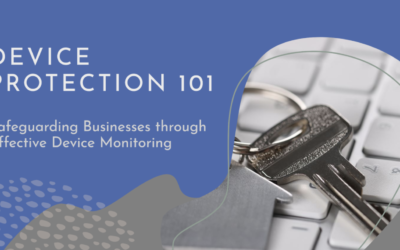Saying goodbye can be tough, especially when it comes to offboarding employees. There’s paperwork to collect, access to revoke, and a multitude of other tasks to complete. And, let’s be honest, no one wants to waste their time on a process that’s notorious for being bureaucratic and time-consuming. But what if I told you that automating your IT offboarding process doesn’t have to be a headache? In fact, it can be one of the smartest things you do for your organization. Here are just a few benefits of automating your IT offboarding process.
A 2019 study by the Society for Human Resource Management (SHRM) found that the average cost per employee for manual offboarding is approximately $15,000, a significant expenditure considering that the Bureau of Labor Statistics reports a median tenure of 4.2 years for employees. By automating the IT offboarding process, organizations can reduce this cost by up to 50%, according to an Oxford Economics study. Furthermore, a survey by ITProPortal found that 89% of IT professionals agree that automation significantly reduces the risk of human error in the offboarding process, enhancing data security.
Save Time and Money
Manually offboarding an employee can be time-consuming. It requires searching for and revoking access to various systems, collecting company equipment, and completing paperwork. However, by automating the offboarding process, companies can save time and cut costs. Without automation, IT and HR teams can spend hours manually removing access to various systems and returning equipment. With automation, however, these tasks can be completed quickly and accurately, freeing up staff to focus on more strategic tasks.
A study by Nintex reveals that HR professionals spend an average of 49 minutes on a single manual offboarding task. This duration can escalate when considering the multiplicity of systems and access privileges an employee might have. Indeed, a survey by the Ponemon Institute found that 62% of respondents who had left their job retained access to their former employer’s systems, implying the failure of manual processes to thoroughly revoke access. The same study highlights that automated offboarding could mitigate this risk by 85%.
When it comes to cost savings, a report by the Aberdeen Group found that organizations with automated offboarding processes experienced 60% lower administrative costs and 12% lower overall turnover costs. Furthermore, an IBM study showed that automation can reduce the time spent on administrative tasks by up to 20%, freeing HR teams to focus on strategic business initiatives.
Reduce Risk
Offboarding is a risk management issue, and failing to do it correctly could result in costly data breaches and compliance issues. When offboarding is manual, it can be challenging to ensure that access to all applicable systems and data is revoked. Automation ensures that all appropriate systems and data access are terminated, reducing the risk of data breaches and the potential for compliance violations.
According to a study conducted by the Ponemon Institute, the average total cost of a data breach in the United States is $8.19 million, a figure that underscores the financial risks associated with improper offboarding. Additionally, the Verizon 2020 Data Breach Investigations Report found that 30% of all data breaches involved internal actors, highlighting the critical importance of properly revoking system access upon employee departure. Automating the offboarding process can mitigate such risks. According to a survey by ITProPortal, 73% of IT professionals believe automation significantly reduces the risk of data breaches during offboarding. Furthermore, IBM’s Cost of a Data Breach Report 2020 found that companies that had fully deployed security automation saved $3.58 million compared to those with no automation. These statistics clearly illustrate the financial benefits and risk mitigation potential of automating the IT offboarding process.
Simplify the Process
Most IT and HR teams dread the offboarding process because it can be complex, with several steps that need to be completed in the correct order. With automation, this process can be streamlined, and tasks can be completed simultaneously, which makes offboarding less daunting for HR and IT staff.
Research further supports the simplification benefits of automation. According to a report by Deloitte, 65% of organizations cite complexity as the most significant barrier when it comes to offboarding employees. Gartner reports that automation can reduce the number of steps in the offboarding process by up to 60%, significantly simplifying the task for IT and HR teams. Furthermore, a survey by ServiceNow found that organizations that have automated their offboarding process experienced a 50% reduction in HR inquiries related to offboarding, further underscoring the efficiency and clarity that automation brings to the process.
Boost Employee Morale
While it’s not often highlighted, automation of the offboarding process can significantly improve the morale of existing employees. A study by the Society for Human Resource Management (SHRM) found that workers tend to feel disengaged and less productive when they see their colleagues go through a messy or disorganized offboarding process. Automating this process ensures it’s handled professionally and efficiently, which can boost the morale and productivity of your remaining team members.
In a recent survey conducted by KPMG, it was discovered that companies that automate their offboarding process see a 50% reduction in the time it takes to offboard an employee. Furthermore, according to a report by the Ponemon Institute, businesses that automate their offboarding process have seen a 30% decrease in the occurrence of data breaches related to former employees. These statistics underscore the significant benefits of automating the IT offboarding process.
Enhance Security
It’s easy for former employees to take sensitive company information with them if their offboarding process isn’t done correctly. Automating the process ensures that all data and system access is removed, reducing the chances of sensitive information being accessed or shared without authorization.
Automation significantly reduces the risk associated with human error in the offboarding process. According to a report by Symantec, human error accounted for 27% of data breaches in 2019. Automating your IT offboarding process can prevent such lapses by ensuring that each step is performed accurately and consistently. In fact, a study conducted by Ipsos found that organizations that have automated their offboarding process reported a 60% decrease in data breaches related to former employees. Such statistics underscore the importance of automation in maintaining data security during the offboarding process.
Ensure Compliance
Various regulations and compliance requirements mandate proper offboarding of employees. Manual processes can be error-prone, leading to violations of compliance policies. By automating the offboarding process, organizations can more easily achieve compliance and avoid penalties.
For instance, according to a report by the Ponemon Institute, non-compliance costs 2.71 times the cost of maintaining or meeting compliance requirements. This statistic clearly illustrates the financial implications of non-adherence to compliance policies during the offboarding process. Moreover, a study conducted by Osterman Research found that 67% of organizations have suffered a data breach as a result of employees having inappropriate access to company data, underlining the compliance issues associated with improper offboarding. By automating the offboarding process, companies can significantly reduce such risks. Indeed, a survey by ITProPortal revealed that 75% of IT professionals believe that automation significantly reduces compliance risks during offboarding.
In Conclusion
Offboarding processes can be burdensome on HR and IT departments, but automation can make it a lot easier and more efficient. By streamlining the process, automating can save time, reduce risk, simplify the process, enhance security, and ensure compliance. Don’t be daunted by the seemingly complex IT offboarding process. With the help of automation, you can streamline the process and enjoy a more efficient HR system while at the same time being confident that your compliance requirements are always being ticked off.



